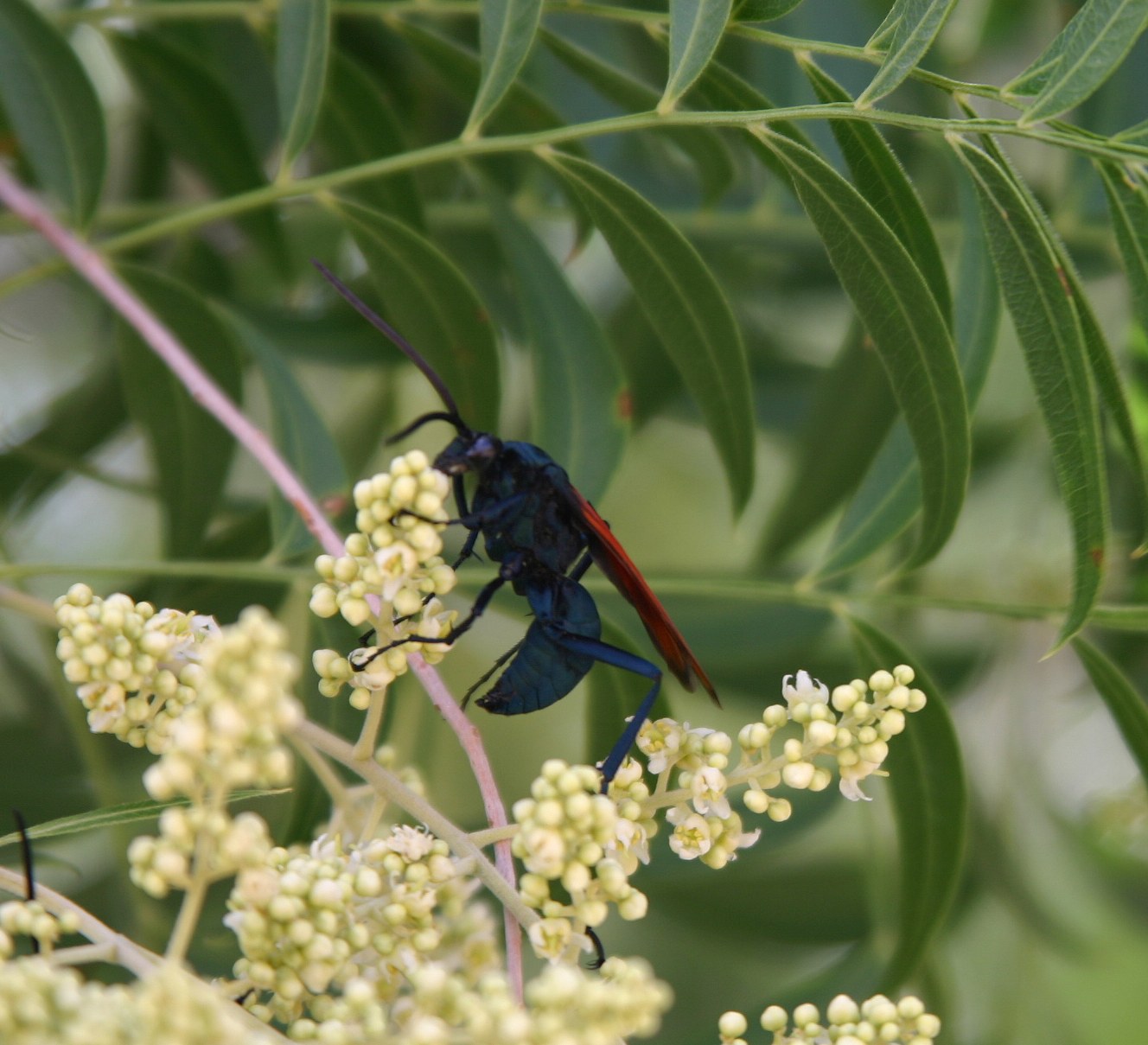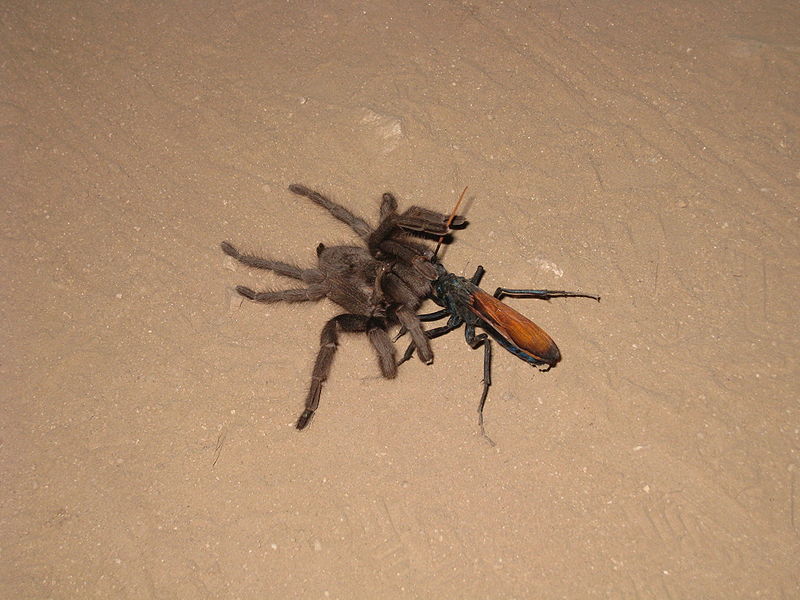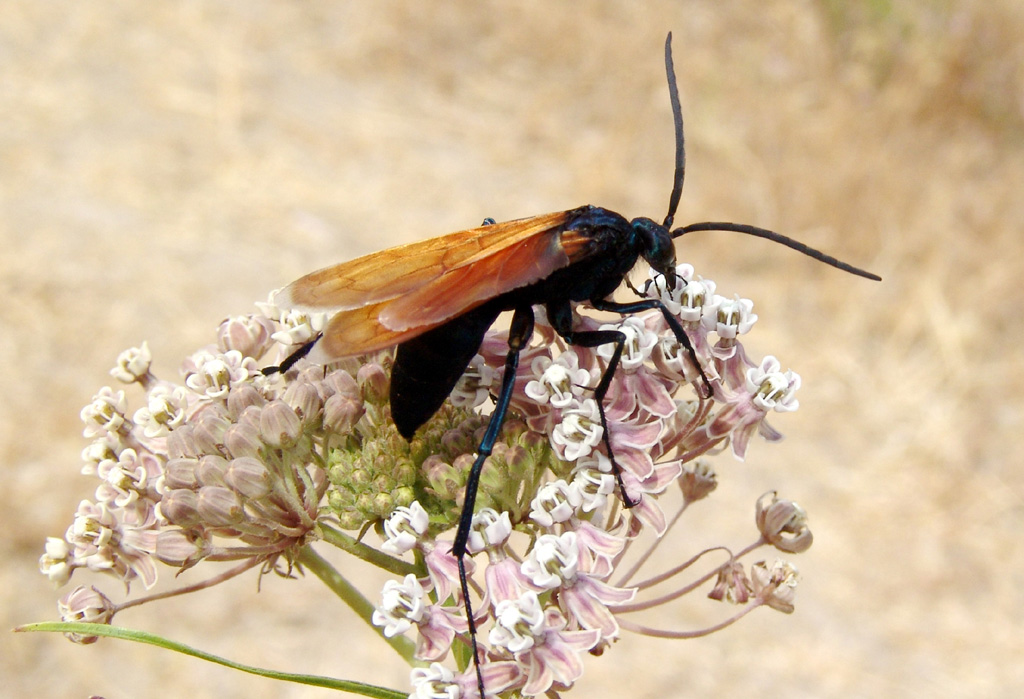Urbanization and land-use change is accelerating in many parts of the world, leading to rapidly changing environmental conditions along urban-rural interfaces and a tendency for there to be both a disconnect and a conflict between humans and wildlife. In the Santa Barbara urban-rural interface, encountering a bobcat or even a mountain lion, while rare, is not that uncommon, and losing a pet to a coyote is a disturbingly frequent occurrence, so spotting a tarantula hawk on the UCSB campus should come as no surprise.
A tarantula hawk? If you ever collected or studied insects in southern California, you probably know that Pepsis formosa, the tarantula hawk wasp, is among the largest of all wasps, that it is the most poisonous insect in North America, and (gasp!) that it preys on tarantulas. Your editor encountered one on the west side of Ellison Hall today and immediately recognized it by its size (2 inches long) and its distinctive blue-black body and orange colored wings.
Tarantulas? Yes, we have those in the Santa Barbara urban-rural interface as well! “A tarantula hawk is a spider wasp which hunts tarantulas as food for its larvae. The female tarantula hawk captures, stings, and paralyzes the spider, then either drags her prey back into her own burrow or transports it to a specially prepared nest, where a single egg is laid on the spider’s body, and the entrance is covered. When the wasp larva hatches, it rips a small hole in the spider’s abdomen, then plunges into the spider’s belly and feeds voraciously, avoiding vital organs for as long as possible to keep it fresh. After several weeks, the larva pupates. Finally, the wasp becomes an adult, and tears open the spider’s belly to get out. The wasp emerges from the nest to continue the life cycle” (source).
If we have tarantula hawks on campus, we probably have tarantulas–but you should worry more about being stung by the wasp than being bitten by the spider (whose bite is more on par with a bee sting): “The tarantula hawk is relatively docile and rarely stings without provocation. However the sting, particularly of Pepsis formosa, is among the most painful of any insect, though the intense pain only lasts for about 3 minutes. Commenting on his own experience, one researcher described the pain as ‘…immediate, excruciating pain that simply shuts down one’s ability to do anything, except, perhaps, scream. Mental discipline simply does not work in these situations.’ In terms of scale, the wasp’s sting is rated near the top of the Schmidt Sting Pain Index, second only to that of the bullet ant (of South America) and is described by Schmidt as ‘blinding, fierce, [and] shockingly electric’” (Ibid).
Editor’s note: To watch a tarantula hawk hauling off a tarantula at Sage Hill Campground in the lower Santa Ynez Recreation Area, see this You Tube video, and, regarding the annual tarantula migration in Santa Barbara, see this You Tube video.
Article by Bill Norrington





